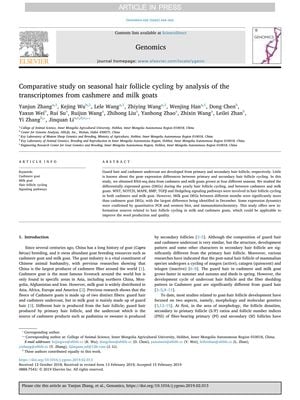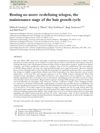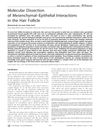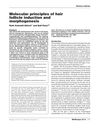Comparative Study on Seasonal Hair Follicle Cycling by Analysis of the Transcriptomes from Cashmere and Milk Goats
February 2019
in “
Genomics
”
hair follicle cycling RNA-seq WNT signaling pathway NOTCH signaling pathway MAPK signaling pathway BMP signaling pathway TGFB signaling pathway Hedgehog signaling pathway differentially expressed genes secondary to primary follicle ratio RNA sequencing WNT pathway NOTCH pathway MAPK pathway BMP pathway TGFB pathway Hedgehog pathway DEGs

TLDR Cashmere and milk goats have different hair growth cycles and gene expressions, which could help improve wool production.
In the comparative study on hair follicle cycling between cashmere and milk goats, researchers analyzed RNA-seq data from skin samples taken across four seasons. They discovered that both goat breeds exhibited hair follicle cycling involving WNT, NOTCH, MAPK, BMP, TGFB, and Hedgehog signaling pathways. However, milk goats showed significantly more differentially expressed genes (DEGs) between months, especially between September and December, than cashmere goats. The largest gene expression differences in cashmere goats were observed between March and December. The study also highlighted breed-specific differences in hair follicle development, with cashmere goats having a higher secondary to primary follicle ratio. The research, which included over 32 million raw reads for cashmere goats and over 52 million for milk goats, identified 565 DEGs in cashmere goats and 2860 DEGs in milk goats. These findings contribute to the understanding of the molecular mechanisms behind hair follicle development and cycling, which could have implications for improving wool production and quality.














